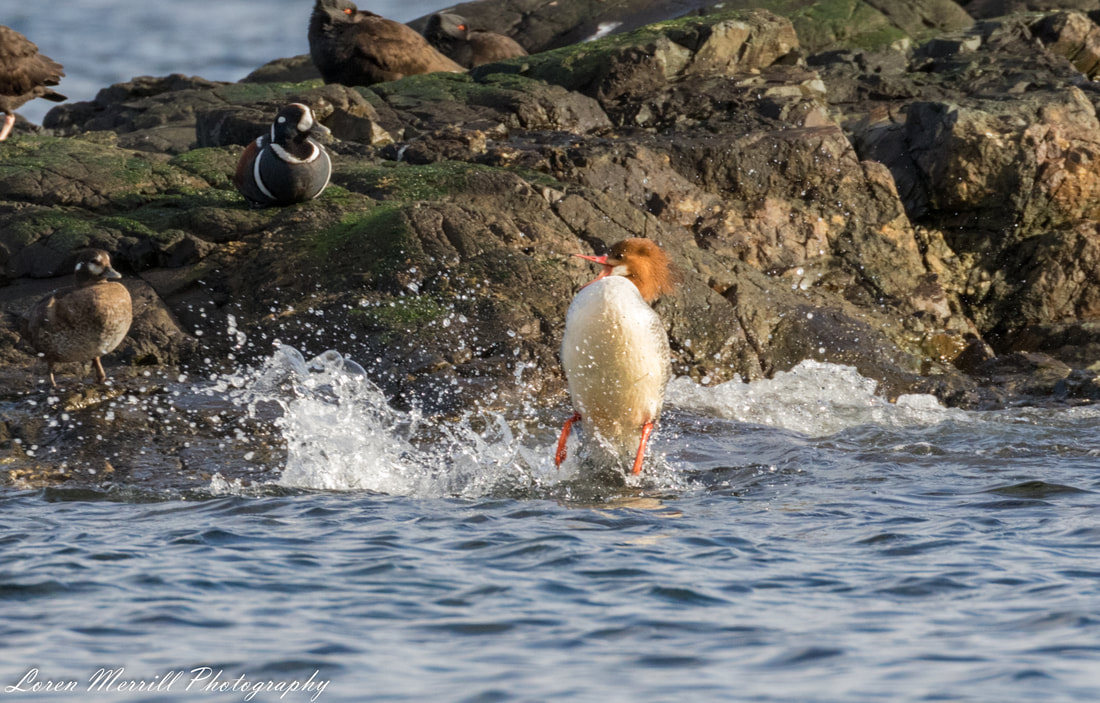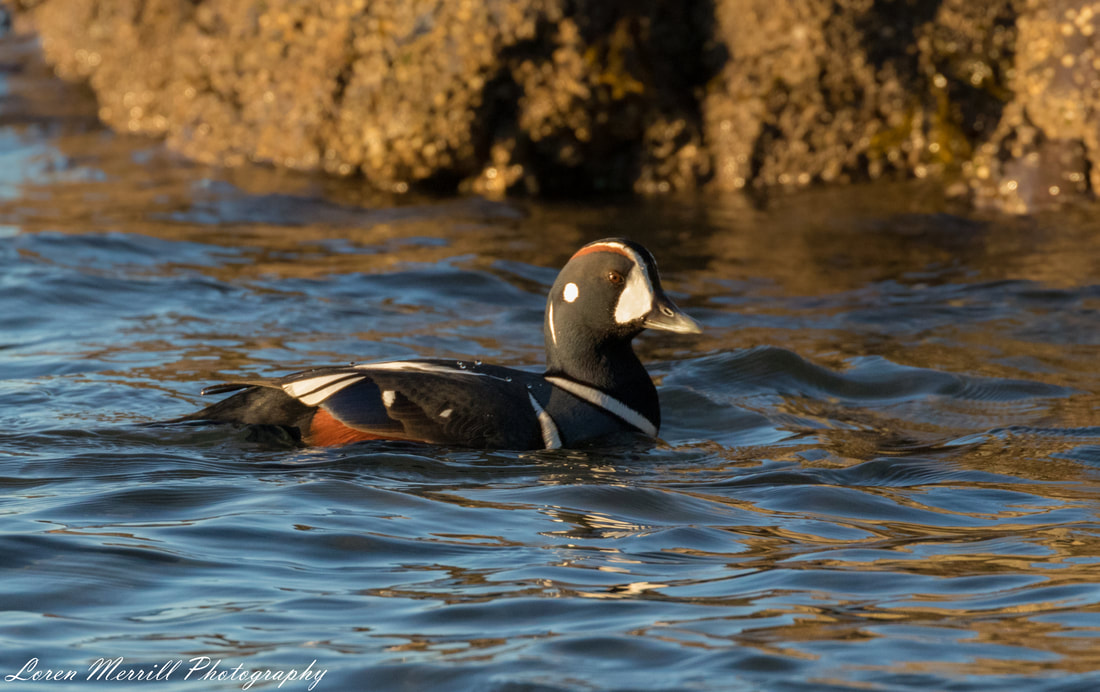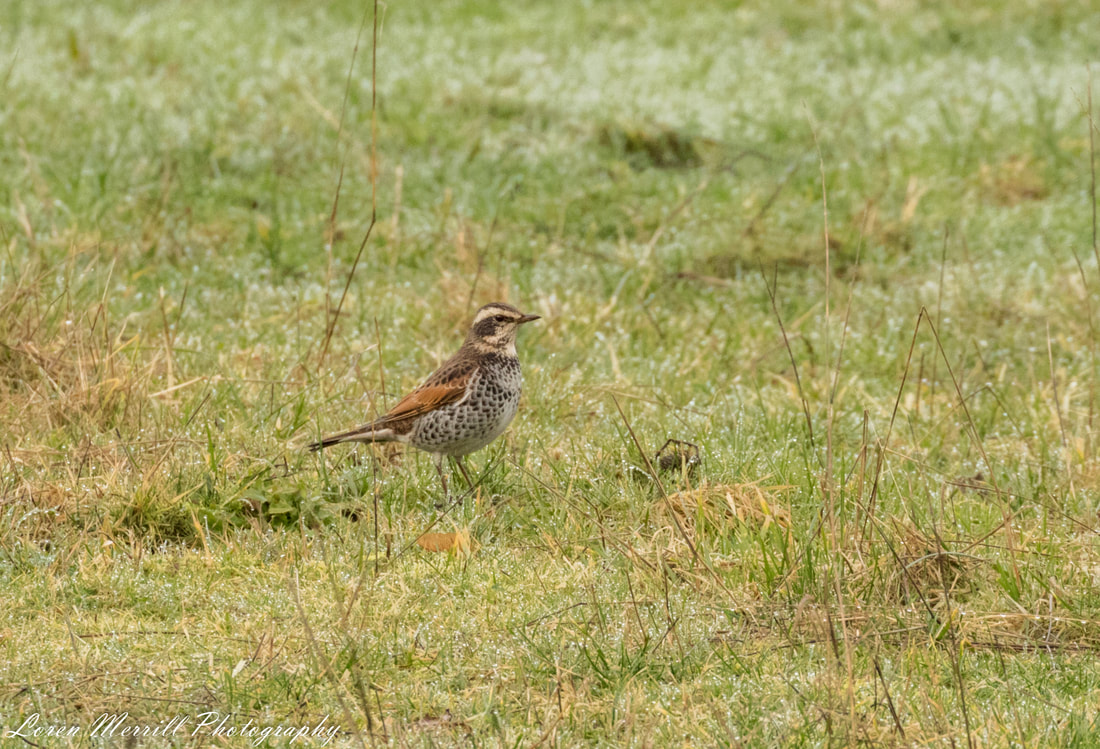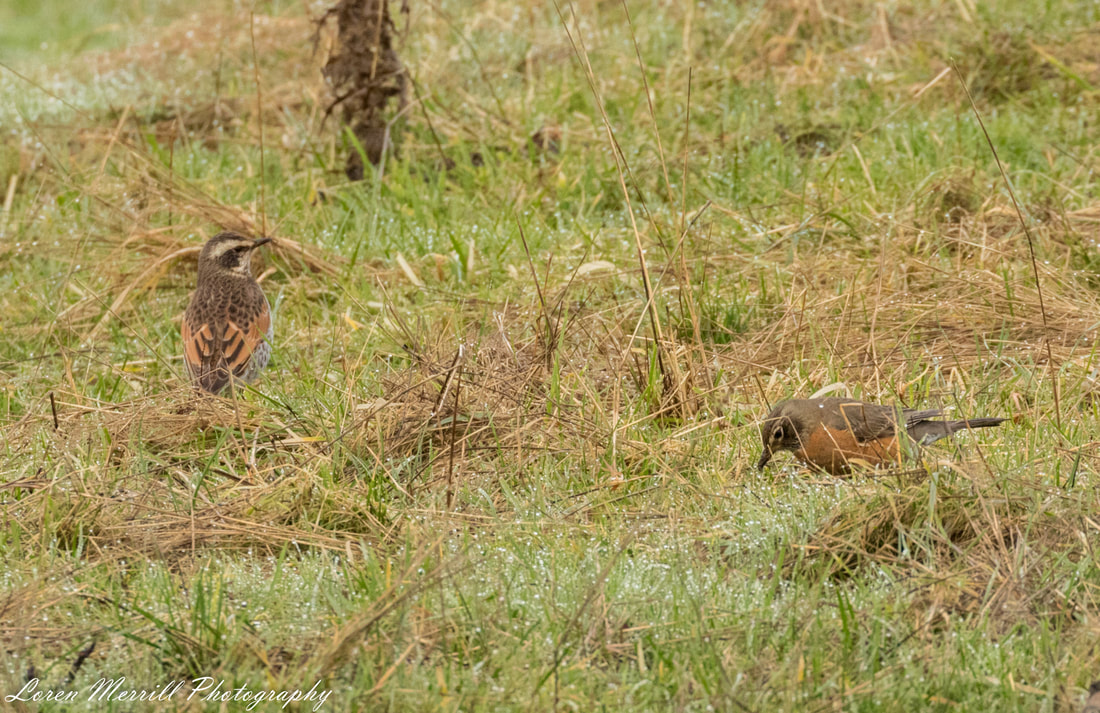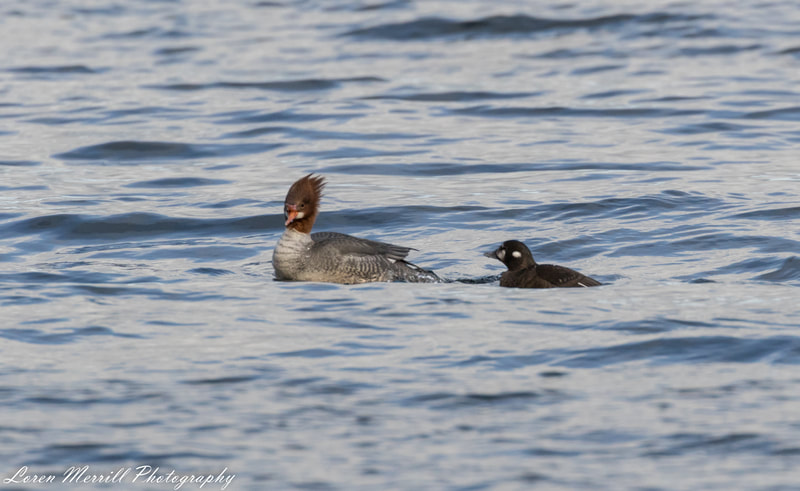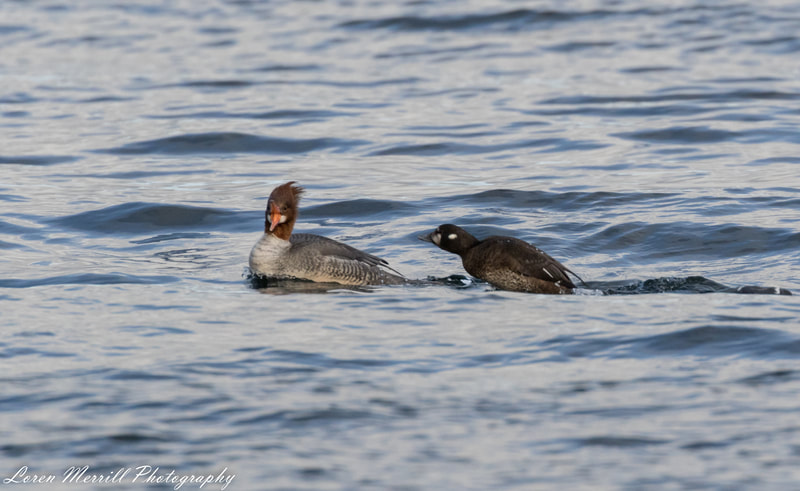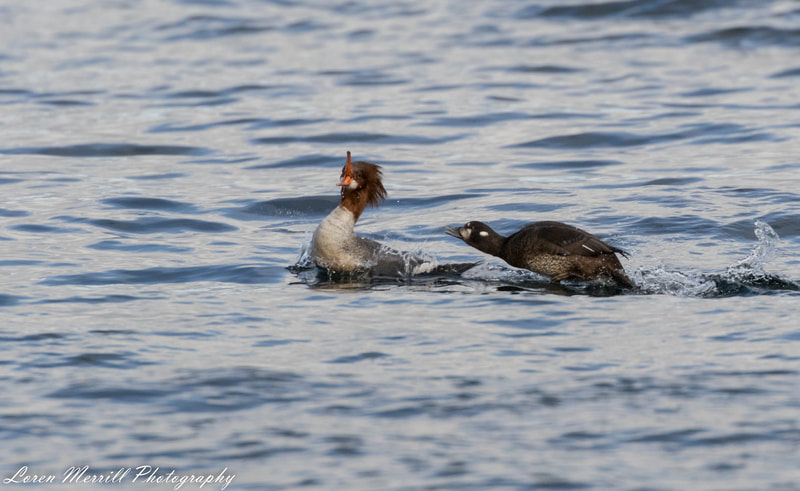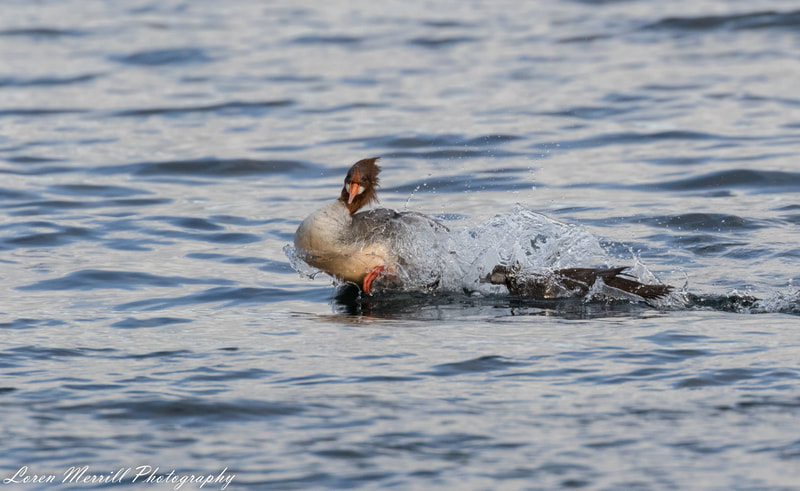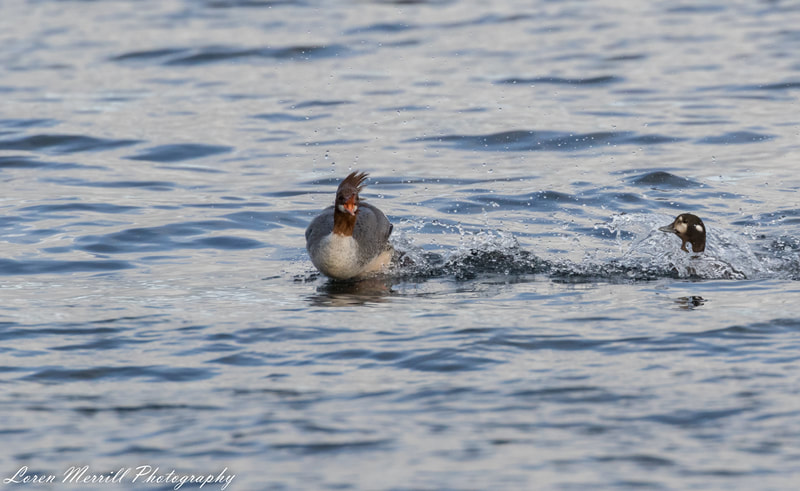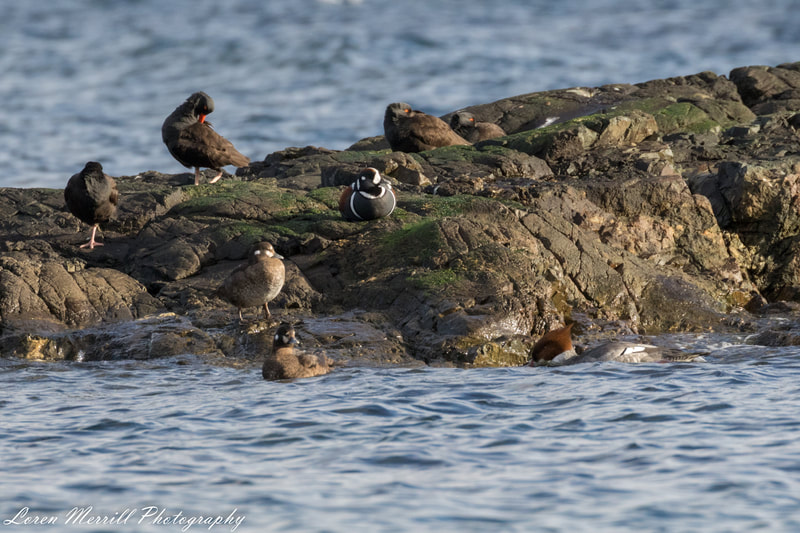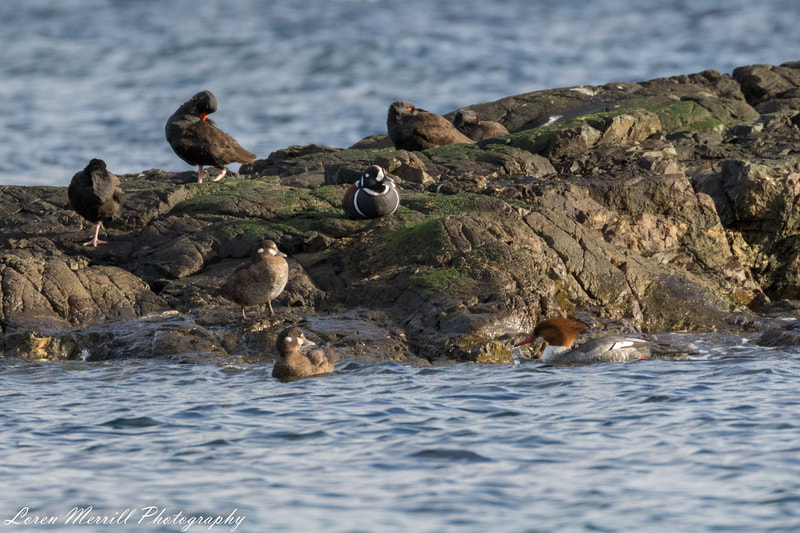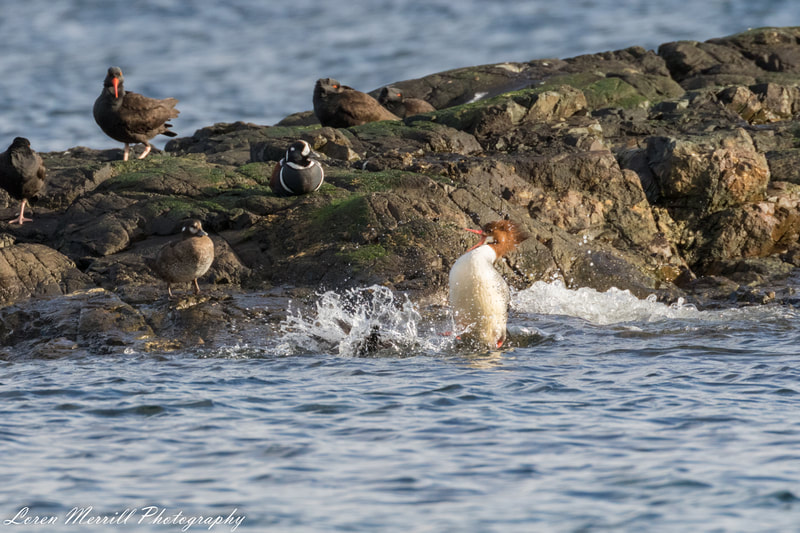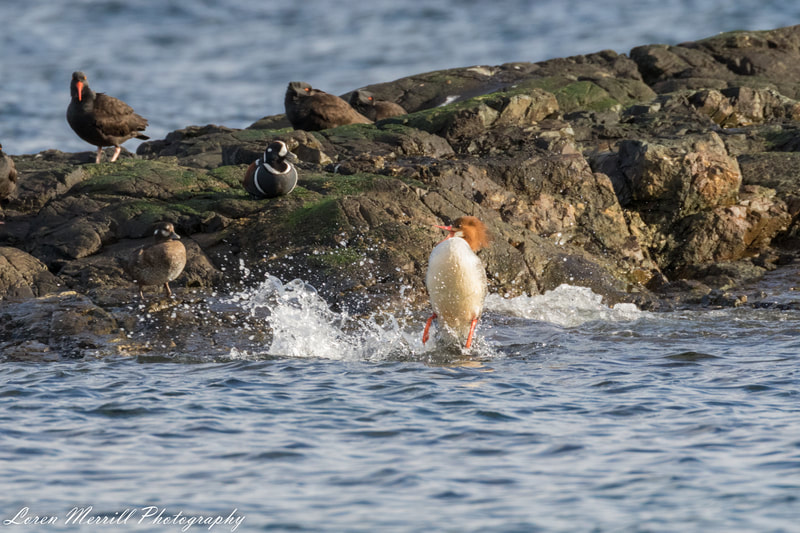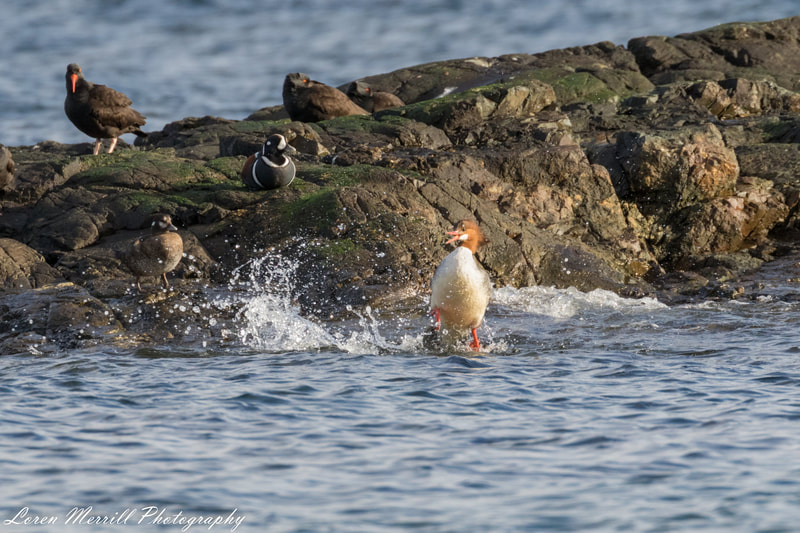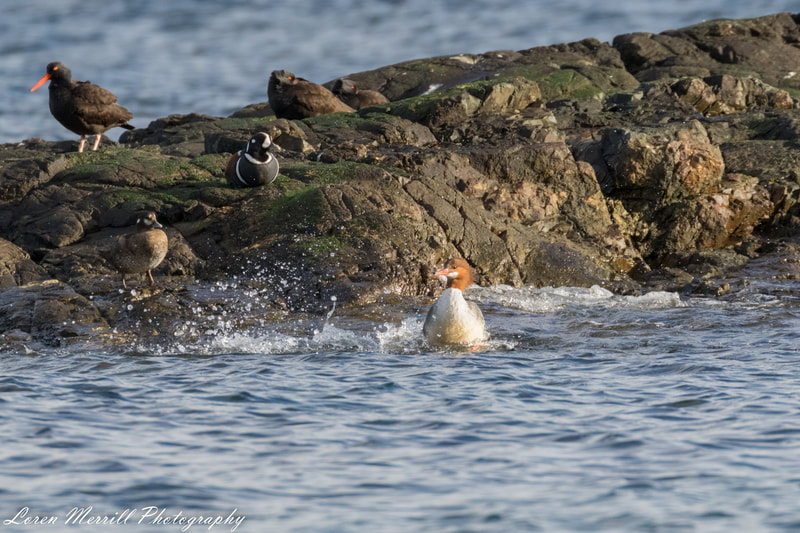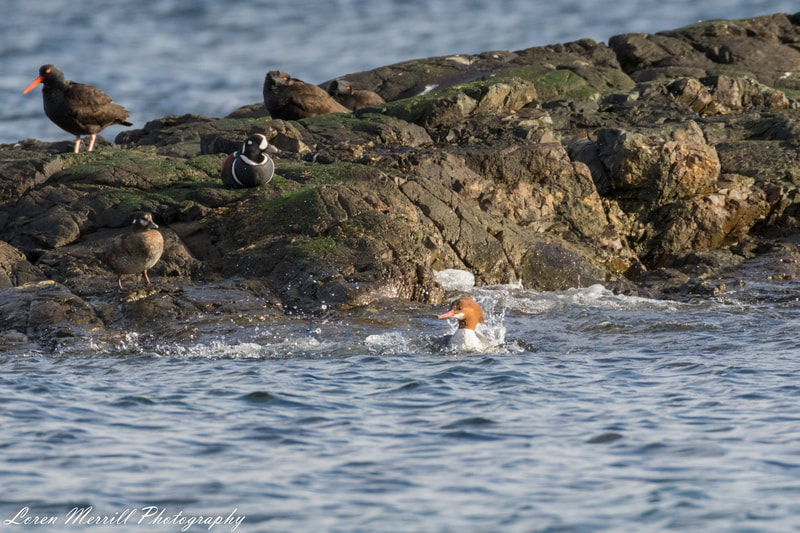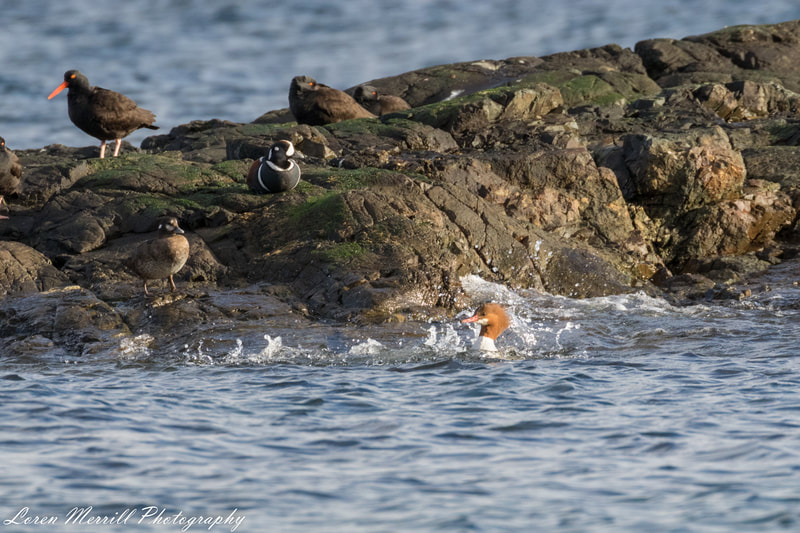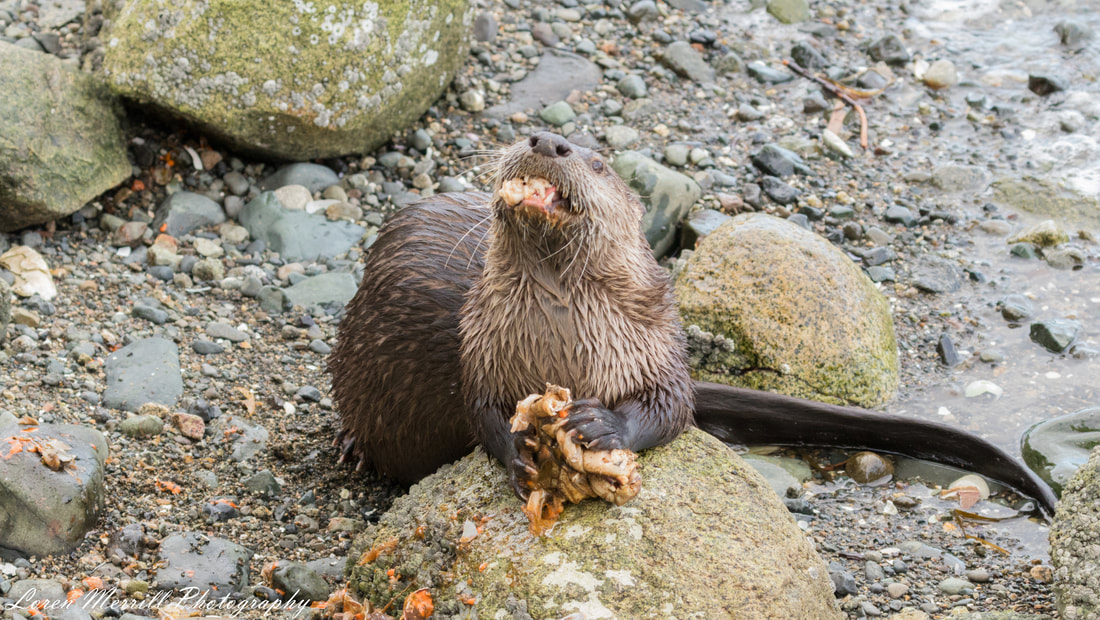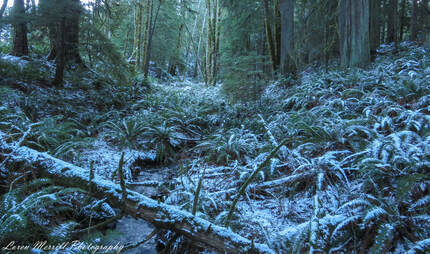 After one of the earlier snowfalls, I went to the Holland Creek Trail to enjoy the scenery. Ladysmith, BC. After one of the earlier snowfalls, I went to the Holland Creek Trail to enjoy the scenery. Ladysmith, BC. I know. Back to back posts with duck in the title? Don’t worry—it will all be worth it. Our time on the island has been marked by remarkably stable weather. Highs during the day in the mid-40s (that’s Fahrenheit of course) and in the low 30s at night. Quite temperate given that we live at the 49th parallel. That stability took a plunge early this week, and we are currently experiencing an extended cold-snap. What’s more, those cold temps have been accompanied by frozen precipitation; an inch of snow here, a half inch there, maybe 3-4 inches today. The result is a frosted green and white landscape of ferns and conifers cloaked in snow, and patches of moss donning little snow fedoras. Apparently such a prolonged period of cold and snow is an unusual event around here, and it will be interesting to see how the flora and fauna respond. The point of all this is to say that the generally mild and stable climate during the winter makes the island a top wintering destination for a multitude of migrating waterfowl. You’ve already met the buffleheads and goldeneyes, but there are many species of duck, loon, and grebe that come here for the cold months to bask in the light drizzle that embodies the Pacific Northwest’s winter. One of my favorite ducks is the harlequin duck, which made a brief cameo in Post 2 at Washington Park, Anacortes. The males of this species are quite striking- a blue/gray base accented with bold black and white markings, and a large chestnut patch on the sides. If you are ever lucky enough be close to these birds when they vocalize, you might be a tad taken aback by the noise that comes out of their beak. It’s a rather odd squeaking sound, which has led to the creation of a wonderful nickname: the sea mouse. This aquatic rodent-duck breeds along fast-flowing streams of the far north, and mountainous areas of the Pacific Northwest, Idaho, Montana and Wyoming. During the winter, it prefers rocky coastal waters with good wave action where it dives for fish and aquatic invertebrates such as crabs and bivalves. As ducks go, the harlequin duck is on the small side, but I learned recently that they have some big attitude to go with their diminutive stature. A few weeks back, Tara and I ventured north to Nanaimo to go check out a dusky thrush that my friend Philina had texted me about. This bird breeds in Siberia and typically winters in India, Vietnam, China, and adjacent countries in Asia. So its appearance on Vancouver Island was unexpected. As in “third record in British Columbia ever” unexpected. Tara and I navigated to the area the bird had been reported, and a flock of birders standing around with binoculars and spotting scopes was the cue that we were in the right spot. When we sidled up to the group, the bird was not in view, but within 15 minutes someone had re-spotted it a little ways down a side road. The crazy vagrant bird was initially perched high up in a cedar, partially hidden from view, but after a little while it flew to the ground where it began foraging along with a mixed flock of juncos, yellow-rumped warblers, golden-crowned and song sparrows, and American robins. The dusky thrush was very similar in shape, size, and behavior to the robins, and their proximity to one another allowed for an easy comparison. We watched the bird for half an hour, said goodbye to the Siberian visitor and our new birding friends, and made our way to Neck Point State Park for some coastal birding.  A pair of female Common Mergansers in the coastal waters of Vancouver Island, BC. A pair of female Common Mergansers in the coastal waters of Vancouver Island, BC. By the time we arrived at the park, the sun had shed its gray cloak and was shining brilliantly. An easterly breeze had arisen, stirring the water to action, and in the Strait of Georgia, the blue expanse was punctuated with whitecaps. We found a nice path that hugged the rugged coastline and headed off. We didn’t get to too far before we came across some rocky ledges just offshore that were covered in birds. Black oystercatchers, surfbirds, cormorants, and a bunch of harlequin ducks. There were also harlequin ducks in the water, and I began trying to get some good shots of them swimming. There were also a handful of common mergansers plying the shallow waters, and I split my attention between the two species. Common mergansers are ducks like the harlequins, but they have a long, narrow, serrated bill that’s custom-built for catching and holding onto slippery fish, which make up the bulk of their diet. In the winter, however, they’re not opposed to adding some crab to the menu. The merganser’s foraging tactic in shallow water typically consists of the bird swimming slowly on the surface, and occasionally sticking its head partially underwater (just past the eyes) to sneak a peek at the action. If it sees a fish or crab or promising terrain that warrants closer inspection, the bird disappears under the waves. They propel themselves underwater using their webbed feet, and their long, snake-like neck allows them to probe into small nooks and crevices. They usually swallow their food underwater, but occasionally a bird would surface with some small prey item before getting it properly positioned and gulping it down. I was happily snapping pics of the birds and happened to look over a little to my left where a female common merganser was swimming towards a small group of harlequin ducks. I thought it might make an interesting shot to get both species in the frame, and so I shifted my attention to those birds. Almost as soon as I began taking pictures, one of the female harlequin ducks made a beeline for the merganser, and what must have been simmering tensions rapidly boiled over into an all-out attack. Who knows what the personal histories of these two individuals was, but for some reason, that female harlequin duck decided that she did not like that female common merganser and did not want her in the area. Maybe that merganser stole a crab from her earlier in the day. Maybe a different merganser stole a crab from her the year before, and she’s harbored a grudge against all mergansers ever since. We’ll never know. But as the sequence of images shows, the duck has the steely look of death in her eyes as she launches herself at the merganser which appears to have been caught completely by surprise. I love the expression of indignation that the merganser conveys, but I’ll let the images tell the story of the encounter themselves. What I didn’t know at the time was that this was not an isolated episode, and that the Napoleonic harlequin duck wasn’t done with her vendetta. With the merganser and harlequin ducks no longer in the same frame, my attention drifted away to other birds, and I wandered a little ways down the shoreline. I was brought back to the rocky ledges 20 or 30 minutes later following a bald eagle that had a fish in its talons. When the eagle disappeared, I turned back to the water and noticed a flock of harlequin ducks on and around one of the ledges, and a lone female common merganser making her way towards them. I got the camera up and started shooting. There’s a moment at the beginning of the succeeding episode (2nd image) where the duck and the merganser make eye contact and Tara is convinced the merganser is taunting the harlequin there. Whether that is the case or not, the harlequin is immediately spurred to action. This time, she opts for a submarine attack, and the ensuing sequence is almost a caricature of how one might envision a merganser responding to getting bitten on the butt underwater by the little bully. I can’t help but laugh out loud every time I look at the merganser’s open-beak expression of shock and displeasure. Again, I’ll let the sequence speak for itself. 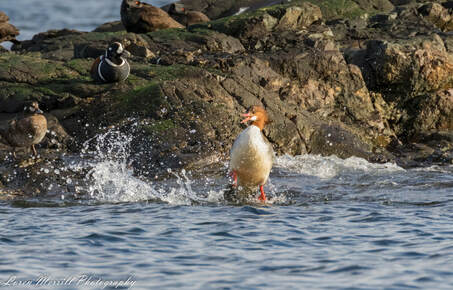 An unlucky female Common Merganser tries to avoid a marauding female Harlequin Duck. Neck Point State Park, BC. An unlucky female Common Merganser tries to avoid a marauding female Harlequin Duck. Neck Point State Park, BC. One of the things I love most about wildlife photography is that it provides a window into behaviors and actions that happen too quickly to perceive in real time. In the above sequences, I never would have seen the merganser’s squawking responses to the harlequin’s attacks, nor would the action of the merganser cartoonishly launching itself out of the water to avoid getting nipped in the butt (or goosed if you will) have been apparent. These insights add extra depth to my encounters and observations, and by capturing it on film, I can continue examining and contemplating the experience long after the encounter is over. In the next post we will return to the otters, and one young individual that consumed a crab just a few feet from me, and then rolled around in the snow to get clean. Or maybe just because it was fun.
0 Comments
Leave a Reply. |
About the author:Loren grew up in the wilds of Boston, Massachusetts, and honed his natural history skills in the urban backyard. He attended Cornell University for his undergraduate degree in Natural Resources, and received his PhD in Ecology from the University of California, Santa Barbara. He has traveled extensively, and in the past few years has developed an affliction for wildlife photography. Archives:
|
